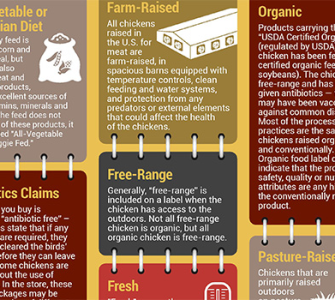Talking with customers about antibiotic use and other poultry-production practices
Today’s consumers face a bewildering array of labels and marketing claims when purchasing poultry products — particularly as it relates to antibiotics.
The industry needs to move away from the “all-or-nothing” message on antibiotic use that confuses consumers and pits producers against each other, said Alan Sterling, director of marketing for Wayne Farms, a B2B poultry producer based in Oakwood, Georgia.
Communicate facts
One of the keys to engaging consumers is to communicate facts in a way that they can relate to and connects with them on a visceral level — using words and explanations that relate to their life experiences.
“Consumers want an emotional conversation and to believe that we have their best interests at heart and put them before our interests,” Sterling told Poultry Health Today.
Extensive research studies on consumer decision-making shows that consumers don’t want to hear about the science behind their food — they are looking for the assurance that their poultry is raised humanely and is safe to eat.
“The poultry industry needs to come up with a position on antibiotics that is clearly communicated, [one] that people can understand and that is consistent with consumer values,” Sterling said. That, in turn, will allow them to make rational decisions about the poultry products they purchase.
Gain trust
In order to gain consumer trust, Sterling thinks the poultry industry needs to develop a universal position or certification on antibiotic use that everyone understands.
“We have a dramatic need for something like the Good Housekeeping Seal of Approval — a designation that signifies and guarantees quality so consumers can say, if you can assure me that’s what you do and why you do it — that fits my value system,” Sterling said.
Developing a consistent, industry-wide position on antibiotic use and animal welfare will build trust with consumers, Sterling explained, adding, “It needs to be well communicated so that people can understand it while remaining consistent with consumer values.”
Posted on June 14, 2016
















